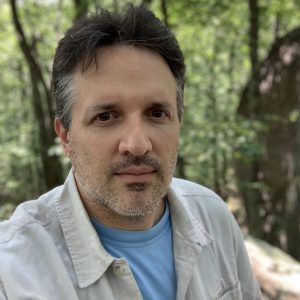Over the centuries, Wildwood Park in downtown Radford has been a Native American burial ground, a saltpeter mine, the site of a Civil War battle, and the city’s first park. Today, it contains a city greenway for recreation and nature study, with biking and hiking trails, marshes, meadows, limestone cliffs, and numerous rare species.
Now, thanks to a conservation easement donated by the City of Radford to the Virginia Outdoors Foundation (VOF), Wildwood Park will remain a protected area for future generations of nature lovers.
The easement, which was proposed by Radford Mayor Tom Starnes in 2008, was finalized by VOF and the city this week. As the easement holder, VOF, which was created by the Virginia legislature in 1966 to preserve open space, will ensure that the 54 acres under easement can never be divided, developed, or opened to commercial timbering. The easement places strict limits on the number of buildings and parking areas that can be added in the future, and prohibits any kind of development within 50 feet of Connelly’s Run, which flows through the property and into the New River.
“I frequently visit Wildwood Park and always return with a tranquil feeling and a deeper appreciation of nature,” said Mayor Starnes. “The conservation easement will assure current and future residents of the City of Radford that development will not occur in this protected area.”
Wildwood Park is a unique natural resource for the city. The park contains several natural heritage resources including two rare plants, a rare butterfly, a significant natural community and a state-designated significant cave called Adams Cave. The Riverway, a popular three-mile paved pedestrian trail, bisects the park, and several foot paths break off into the woods for bird-watching and wildflower walks. The park is a component of the Virginia Birding and Wildlife Trail and is often used by both Radford City and Radford University students for outdoor nature studies.
The park is also rich with history. According to the Radford Historical Society, Native Americans used Adams Cave as a burial ground until about the 1600s. The cave was later mined for saltpeter, a key component of gunpowder, during the War of 1812. During the Civil War, the area was the site of the three-hour Battle of Central, which resulted in cannonball damage to “Arnheim,” the historic home of John Blair Radford, which is adjacent to the park and is listed on the National Register of Historic Places.
In 1929, a swimming pool was built along Connelly’s Run and the area became the first city park. The following year a competition was held to find a name for the new park. Alleen Carper, a student from Radford’s State Teachers College, had the winning entry with “Wildwood.” Eventually, the pool was closed and filled with dirt. The park continued to be used for hiking and other outdoor recreation and education activities but was mostly neglected. In 1998, a group of local citizens formed Pathways for Radford to preserve and revitalize the park and help create and maintain a network of walking and biking trails and greenways throughout the city.
Liz Altieri, president of Pathways for Radford, said, “It’s been a pleasure to be a partner with the City of Radford in ensuring permanent protection of Wildwood Park through the VOF conservation easement. Our organization was formed more than 12 years ago from this very concern, that this model urban riparian forest be preserved forever.”
Ruth Babylon, an easement specialist with VOF who worked on the project, said, “I have a soft spot in my heart for this easement. I lived in Radford for almost 20 years and was an original member of Pathways for Radford. I’ve been associated with a lot of great easements in my ten years with VOF, and this one is truly a gem.”
The Wildwood Park easement is VOF’s second easement within the City of Radford. The other protects 149 acres on Ingles Farm along the New River, which was donated in 2002 by the farm’s owners, Bud and Mary Ann Jeffries. Last year, the rest of the historic Ingles property, on the Pulaski County side of the river, was placed under an easement co-held by VOF and the Department of Historic Resources. Altogether, VOF protects about 12,000 acres in Radford and adjacent Pulaski and Montgomery counties.

Nothing about the burial grounds and pictures of the Indian village that was there. Visited it 50 years ago. Graves pottery, it was great. Love to share with my grand children. Need more info. Thanks
I remember the village being on the river side of that area where Bissett park now is!! My best friend and I used to ride our bikes down there and they would let us help dig some!!!
Leave a comment